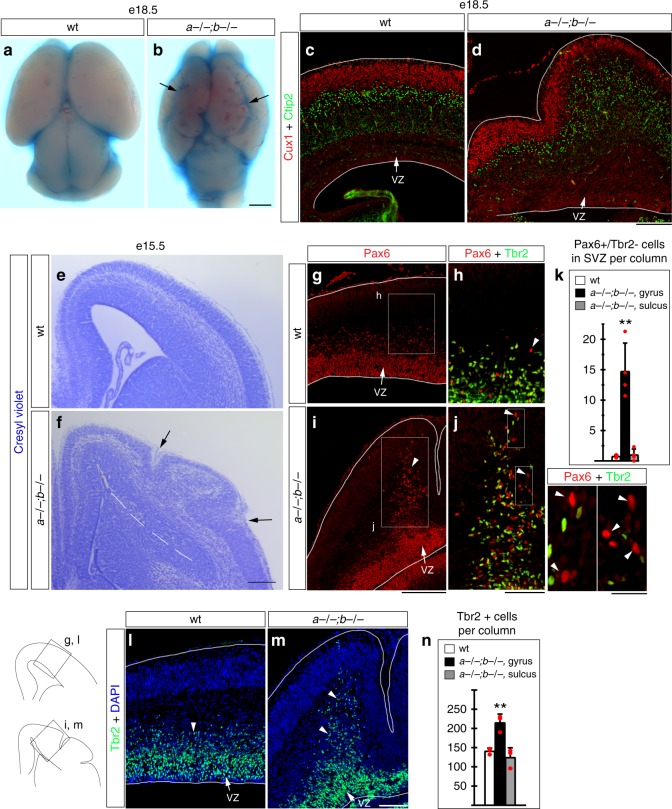Fig. 1.
Gyrification with BPs expansion in the Lmx1a−/−;b−/− mouse cortex. Dorsal view of whole mount telencephalon with fast green dye applied on the telencephalic surface (a, b) and coronal cresyl violet or antibody-stained sections (c–j, l, m) at indicated stages. a, b Cortical surface of e18.5 Lmx1a−/−;b−/− mutants, but not wild-type littermates, showed groves (arrows) that extended along the anterior-posterior axis in each cortical hemisphere. c, d Cux1/Ctip2-immunostained sections showing that despite gyrification of the outer cortical surface (faces up), cortical layering was not grossly disrupted in Lmx1a−/−;b−/− mutants. Corresponding ventricular surface (faces down) was not folded. VZ - ventricular zone. e, f Arrows point to sulci that develop on the outer cortical surface of Lmx1a−/−;b−/− embryos at e15.5 (f). Dashed line demarcates cortical ventricular surface and lateral ganglionic eminence. g–k Numerous basally located Pax6+ cells were present in the emerging gyri (i, arrowhead) but not sulci in e15.5 Lmx1a−/−;b−/− mutants (i). The number of Pax6+/Tbr2− cells located basal to the dense band of Tbr2 + IPs (arrowheads in h, j, j insets) was dramatically increased in cortical gyri but not sulci relative to wild-type littermates (**p < 0.01, n = 4 embryos per genotype). l–n In e15.5 Lmx1a−/−;b−/− mutants, Tbr2 + IPs (arrowheads) were increased in the number in cortical gyri but not sulci relative to wild-type littermates (**p < 0.01, n = 3 embryos per genotype). All data are mean ± s.d., all p values are from two-tailed t-test after Bonferroni correction for multiple comparisons. Source data for panels k and n are provided as Source Data File. Scale bars: 1 mm (a, b); 200 μm (c–g, i); 100 μm (h, j, l, m); 25 μm (insets in panel j)

